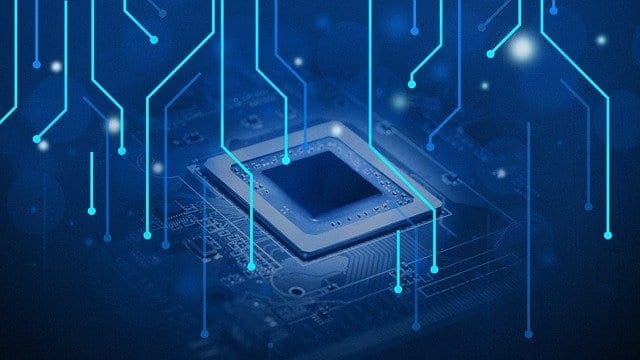This is the chipset.
The chipset defines the motherboards compatibility with one or more generations of CPU from a specific brand.
Even if the CPU technically fits in the socket, you may find that the chipset is just incompatible.

But what is a chipset, and why is it so controlling?
Contents
Motherboard and CPU Architecture
Back before 2003, all motherboards featured a two-part chipset.
These two parts were referred to as the northbridge and the southbridge.
As you might guess, you could find the southbridge further down the motherboard than the northbridge.
The CPU was connected via the Front Side Bus to the northbridge, which provided access to high-speed connectivity.
Eventually, with the entire northbridge integrated onto the CPU die, the naming scheme no longer made sense.
Intel and AMD renamed the southbridge to the Platform Controller Hub and Fusion Controller Hub, respectively.
Motherboards, however, continued marketing the chips as the chipset.
However, the exact details have changed as some technologies have died out.
The chipset still manages motherboard operation.
It also still provides SATA connectivity and audio functionality.
The chipset also provides some USB connectivity as well as some PCIe lanes.
It can typically be found in the bottom right corner of a motherboard, often under a heat sink.
The connection between the CPU and chipset has been updated.
This total bandwidth is shared across all of the connectivity the chipset provides.
This connectivity is typically the highest speed connectivity the motherboard offers.
Connected devices also dont have to share bandwidth with anything as they have direct access to the CPU.
Things to Lookout For
Each chipset only supports a limited number of generations of CPU.
Intels chipsets tend to support two generations.
In contrast, AMD tends to extend that to three, though not necessarily on product release.
Depending on your point of view, this opens up or limits options for future CPU drop-in replacements.
Its essential to do your homework when looking at a CPU and motherboard.
A single CPU generally supports more than one chipset, with high-end and budget tiers and some intermediary tiers.
For example, Intels current 12thGeneration Core CPUs use the 600 series chipset.
There are four options, H610, B660, H670, and Z690.
You might see a potential issue here.
For those that arent careful, these similar naming schemes can lead to confusion.
Annoyingly, motherboard manufacturers can choose not to make all USB ports the highest speed available, for example.
So, verify that any motherboard offers the connectivity you want, even if the chipset means it should.
Conclusion
The chipset is a communication controller for relatively slow communication buses.
This includes SATA, USB, and even PCIe.
Its designed to provide connectivity to the case and some motherboard-connected devices.
All chipset-connected devices share a limited bandwidth to the CPU.